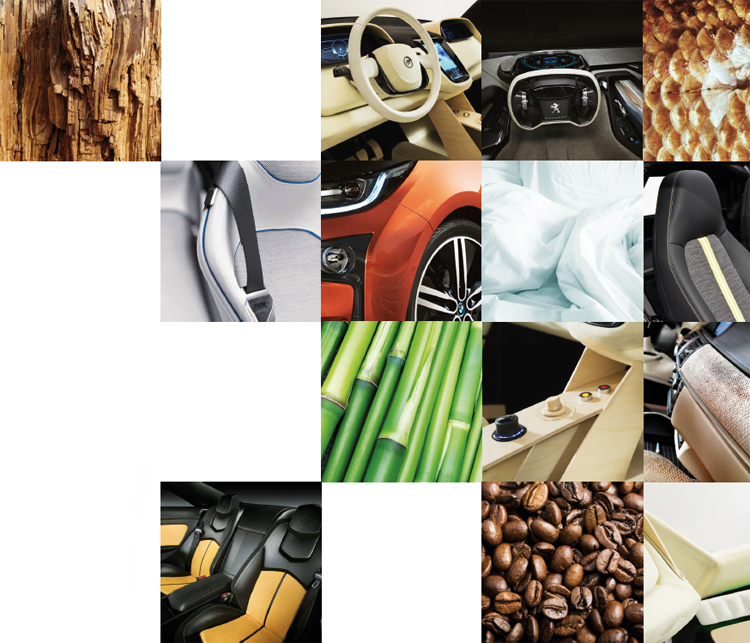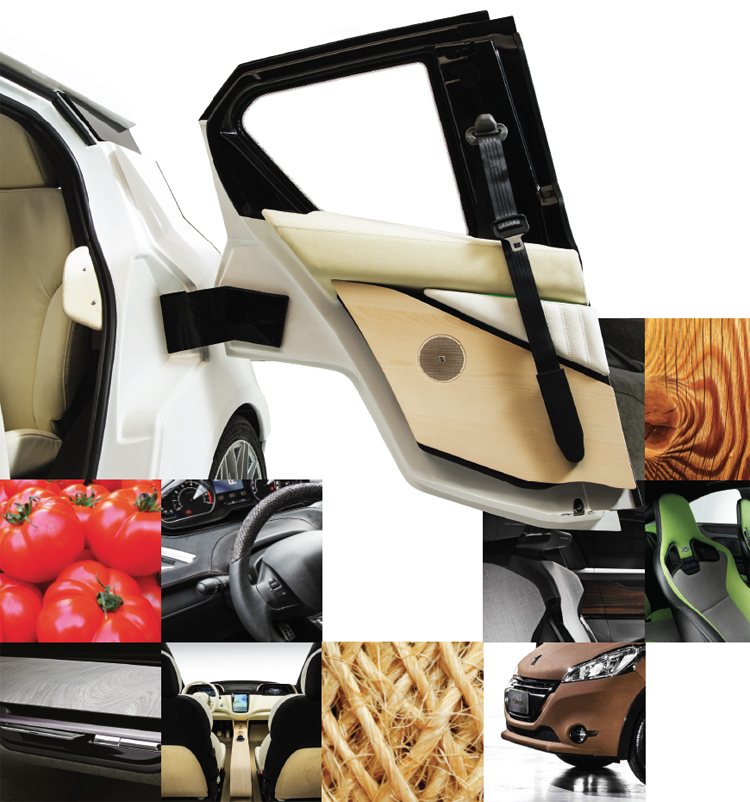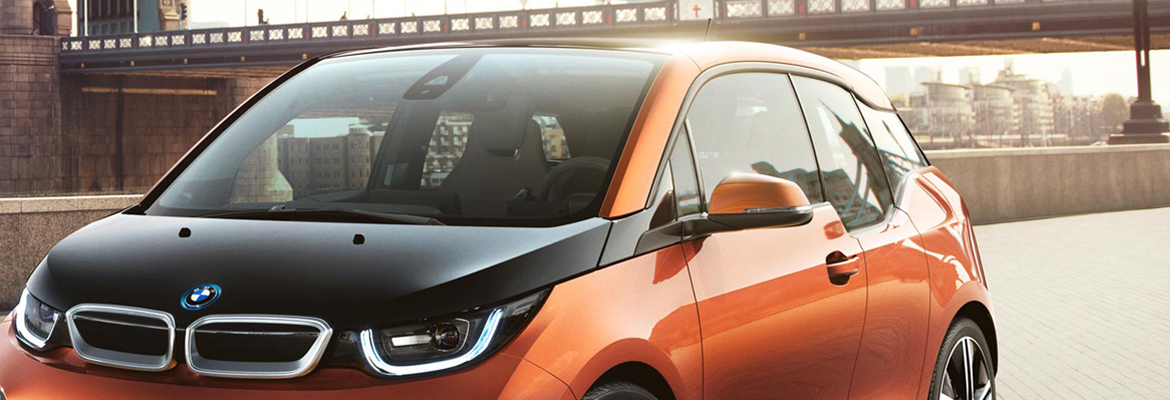New vehicles design is increasingly searching for performance solutions linked to materials and fuel consumption. On the one hand, there is the need for continuously improving engine efficiency in order to cut fuel consumption and reduce CO2 emissions. On the other, finding lighter high-performance materials to reduce vehicles’ weight. Fuel consumption and materials, a formula that in recent years has led to the development of design solutions able to deliver crucial improvements in fuel consumption.
So, many car manufacturers have started to develop and use eco-friendly materials, often trying new ones, either bio-based or recycled. These design solutions, adopted by several car manufacturers, are proof that something has really changed. While respecting strict safety and protection standards for vehicles and drivers, sustainable innovation is a viable route to take even for a complex sector such as the motor vehicle industry.
Over the last year, we have carried out some research on eco-friendly materials for vehicles, collaborating with motor vehicles manufacturers looking for new solutions.
Bamboo, coffee, cork, flax, wool, wood and hemp are some of the materials being tested for making interior furnishings and structural components.
Many of these solutions, already adopted in vehicles on the market or developed for concept car projects, help us understand the state of the art as far as the search for materials is concerned.

Conceived for the urban environment and exclusively with an electric engine, BMW i3 is a car made including all the sustainability concepts. Starting from the fact that its production factory only uses self-generated energy from renewable sources. The car’s interior is characterized by the use of renewable natural materials: kenaf fibre for door panels, naturally-tanned leather for seats and interior panelling, seats made with up to 100% recycled fibres. Other BMW experiments have led to the use of salmon’s skin recycled from the food industry for some interior trims, bamboo and certified wood for shelves and dashboard’s surfaces.
Ford too has been experimenting with new materials for years. The results of some of these trials are adopted in some vehicles, for instance recycled fabric and bioplastics from tomato fibre: dried tomato skins can become cable holders for the electrics or glove compartments for small objects.
Thanks to, in some cases, very advanced design, Peugeot has also come up with many eco-friendly concept cars. For example, Exalt, a car made paying particular attention to the choice of materials used to try to source them as closely as possible to the car’s market. Basically, in the Chinese market, the car’s interior is made using ebony (choice influenced by the widespread presence of these trees in Asia), while in the European one NewpaperWood, obtained from recycled newspapers, is used. Specifically, Peugeot Exalt’s interior is made from recycling the French newspaper Le Figaro – the colour and the appearance are very similar to dark wood – so much so that in some parts you can still see the newspaper’s printed writing.
Following the same philosophy, Peugeot 208 Natural, conceived and designed by a styling team at San Paolo’s Technical Centre, uses recycled materials, some of them locally sourced. They include carbon fibre from the aviation industry, Pirarucu fish skin tanned with vegetable dyes, bamboo and recycled paper.

R&D are continuously evolving leading to projects such as the collaboration between Jaguar Land Rover and the technical compounder Luxus, co-funded by the EU initiative Eco-innovation to promote the marketing of a range of light propylene-based compounds containing more than 60% recycled material. This material is destined to the interior panelling for the European car industry, allowing the car sector to increase the use of recycled polymers in order to meet the legal targets for end-of-life vehicles (ELVs).
Finally, it is worth mentioning Biofore, a concept car made with innovative biomaterial for the car industry. The majority of traditional components made of plastic materials has been replaced with new biomaterials produced with UPM Formi and UPM Grada.
These two materials, the former a cellulose fibre reinforced plastic composite and the latter made with certified wood, are recyclable and help significantly improve the total environmental performance of vehicles taking into consideration their entire lifecycle.
Surely, the introduction of regulations favouring the concept of the circular economy will help improve the credibility of new vehicles that will use sustainable solutions so far adopted in concept cars.
Info



